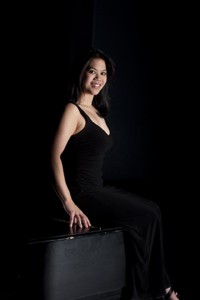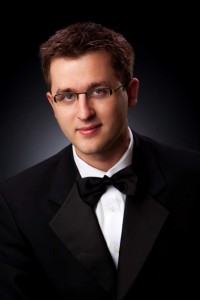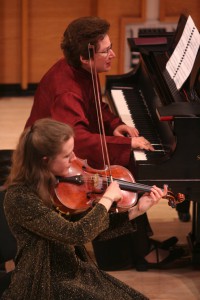Kyunghun Kim is a musician with impressive credentials. Recently graduated from the Juilliard School with a Masters degree in conducting under the tutelage of James DePriest (with a full scholarship from the Bruno Walter Memorial Foundation), he also has a diploma in Conducting from the Curtis Institute of Music. He has also had studies with other renowned conductors, such as Alan Gilbert, Marin Alsop, and Michael Tilson Thomas. Mr. Kim is the resident conductor of the Chelsea Symphony, the New York Humanitarian Orchestra, and the orchestra he led tonight, The Doctors Orchestral Society of New York.
The Doctors Orchestra was founded in 1938 by physicians interested in performing symphonic music. Now in its 74th season, the ensemble is no longer comprised solely of physicians, but open to musicians of all professions. As orchestra manager and cellist Charles Ippolito stated in a pre-concert address, the members of the orchestra are all volunteers who do it for the love of music.
This writer is always enthusiastic about attending concerts with non-professional players. At times the playing has been excellent and as memorable as any “professional” group, and other times, to be perfectly frank, downright appalling; no matter the end result, however, the players invest themselves with all their abilities and passion- there is never a “phone it in” attitude that I have experienced with even some of the most famous orchestras in the world.
Leading a non-professional orchestra is a big challenge. The careful selection of repertoire, limited rehearsal time, often changing personnel, wide diversity in playing abilities, and the need to be a patient teacher are all issues that must be considered. Mr. Kim appears to be the man for the job.
The Cello Concerto in B Minor, op. 104 of Antonín Dvořák, with soloist Michael Katz, opened the concert. Mr. Kim is a hard-working conductor who strove to bring out the best from the orchestra, but the opening measures were played timidly, instead of with quiet intensity, and were marred by intonation problems. Once these issues settled a bit, the playing steadied, with Mr. Kim giving strong direction with broad gestures and a baton technique that clearly defined the beat. Mr. Katz gave a polished performance; his tone was singing in the lyrical second movement and the bravura sections of the first and third movements were played with brio. Mr. Kim was a worthy collaborator, keeping the needs of the soloist in mind while keeping the orchestra on track. Although there were a few instances of the orchestra overpowering the soloist and some excessive exuberance in the trumpet section in tuttis (played very well, I must admit, even if much too loudly!), the end result was a commendable performance.
After intermission, Mr. Kim offered his interpretation of Johannes Brahms’s Symphony No. 2 in D major, Op. 73. Completed in the space of a few months in 1877, this work is Brahms’s most optimistic and idyllic of his four symphonies. Mr. Kim led with confidence, showing he had carefully thought out his approach and knew exactly where he was going and how to get there. The orchestra took his lead and for the most part, responded with a like confidence. The intonation problems were still an issue, and there were struggles with exposed sections, but there was some excellent playing as well; the French horn section, the lower brasses, and those loud trumpets were uniformly good. Orchestra and conductor were at their best in the ebullient finale which ended the concert in a joyful mood. I must digress here for a moment to comment on a puzzling statement in the program notes about the finale-“Brahms’ influence from Mozart, Haydn, and Mahler can see seen in the structure and tonal progression…”. Mozart and Haydn, yes, but Mahler? Mahler was 17 years old in 1877, had only begun composing, and did not even meet Brahms until the 1890s!
Mr. Kim is a talented conductor, whose poise and clear communicative style makes him a good fit for this orchestra. Anyone can look good in front of a world-class orchestra, but it takes a special personality to work and succeed with non-professional ensembles. I wish him good luck and continued success.




